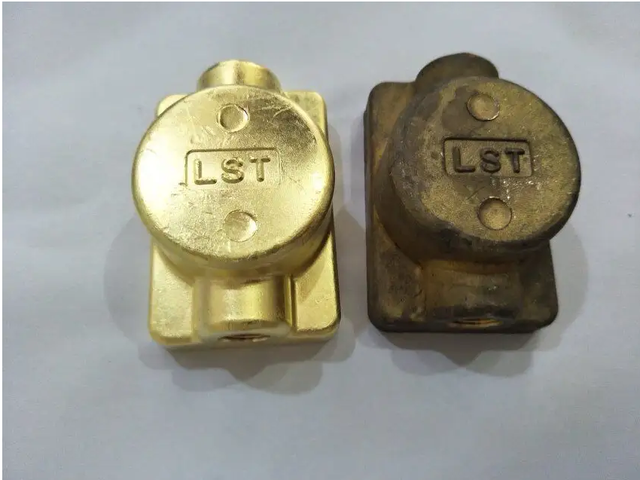Abstract: Copper is a common metal widely used in various industrial and artistic fields. However, copper products are often affected by copper oxide, leading to a deteriorated appearance. This article will introduce technical methods for polishing copper workpieces, emphasizing effective cleaning and removal of copper oxide to achieve a significant improvement in the appearance of the products before and after polishing.
- Introduction Copper is a metal with a long history, known for its unique appearance and excellent conductivity, making it widely used in the fields of decoration, electronics, construction, and manufacturing. However, copper products often encounter the issue of copper oxide during storage and use, which not only affects their aesthetics but may also reduce their performance. Therefore, polishing copper workpieces is a critical process aimed at removing oxide layers and restoring their original brightness and luster.
- Characteristics of Copper Oxide Copper oxide is formed as a result of the interaction between copper and oxygen, typically appearing as thin layers of brown, green, or black color. These oxide layers form on the surface of copper workpieces, reducing their aesthetic quality. Apart from the aesthetic impact, copper oxide can also lead to corrosion and a decrease in the performance of copper products.
- Technical Methods for Polishing Copper Workpieces To restore the original luster of copper workpieces, effective polishing methods are required to remove copper oxide. Here are some common techniques for polishing copper workpieces:
3.1 Mechanical Polishing Mechanical polishing is a widely used method that typically involves the use of rotating brushes or polishing machinery to remove copper oxide. This method can quickly eliminate oxide layers but should be handled with care to avoid scratching or wearing down the copper surface.
3.2 Chemical Polishing Chemical polishing involves the use of specific chemical substances to clean the surface of copper workpieces by dissolving or converting copper oxides. This method can be highly effective under certain conditions but requires careful selection of chemicals to avoid harm to the environment and operators.
3.3 Electrolytic Polishing Electrolytic polishing is an electrochemical-based method that involves using copper workpieces as anodes in an electrolyte solution to remove copper oxide. This method allows for control over the speed and quality of polishing and is suitable for workpieces with complex shapes.
4.Differences in Products Before and After Polishing After polishing copper workpieces, there will be a significant improvement in the appearance and performance of the products. Here are the differences in products before and after polishing:
4.1 Enhanced Appearance Polishing removes copper oxide, making the surface of copper workpieces smooth, uniform, and restoring their original brightness and color. The product’s appearance is significantly enhanced, presenting a more attractive look.
4.2 Corrosion Resistance By removing oxide layers, polishing helps extend the lifespan of copper workpieces and reduces the risk of corrosion. Copper’s corrosion resistance is improved, making the products more durable.
4.3 Smoothness The surface of polished copper becomes smoother, reducing surface roughness, making it easier to clean and maintain. This is especially important in applications with high visual requirements.
5.Conclusion Polishing techniques for copper workpieces are a crucial process for effectively removing copper oxide and enhancing the appearance and performance of the products. Different polishing methods can be selected based on specific requirements to ensure the best results. Polishing not only improves the appearance of copper workpieces but also enhances their corrosion resistance, extending their lifespan, making it of significant value in various applications.
Post time: Nov-09-2023


